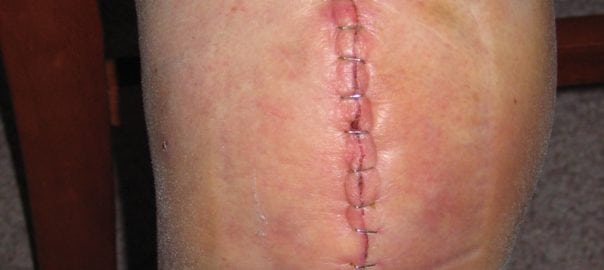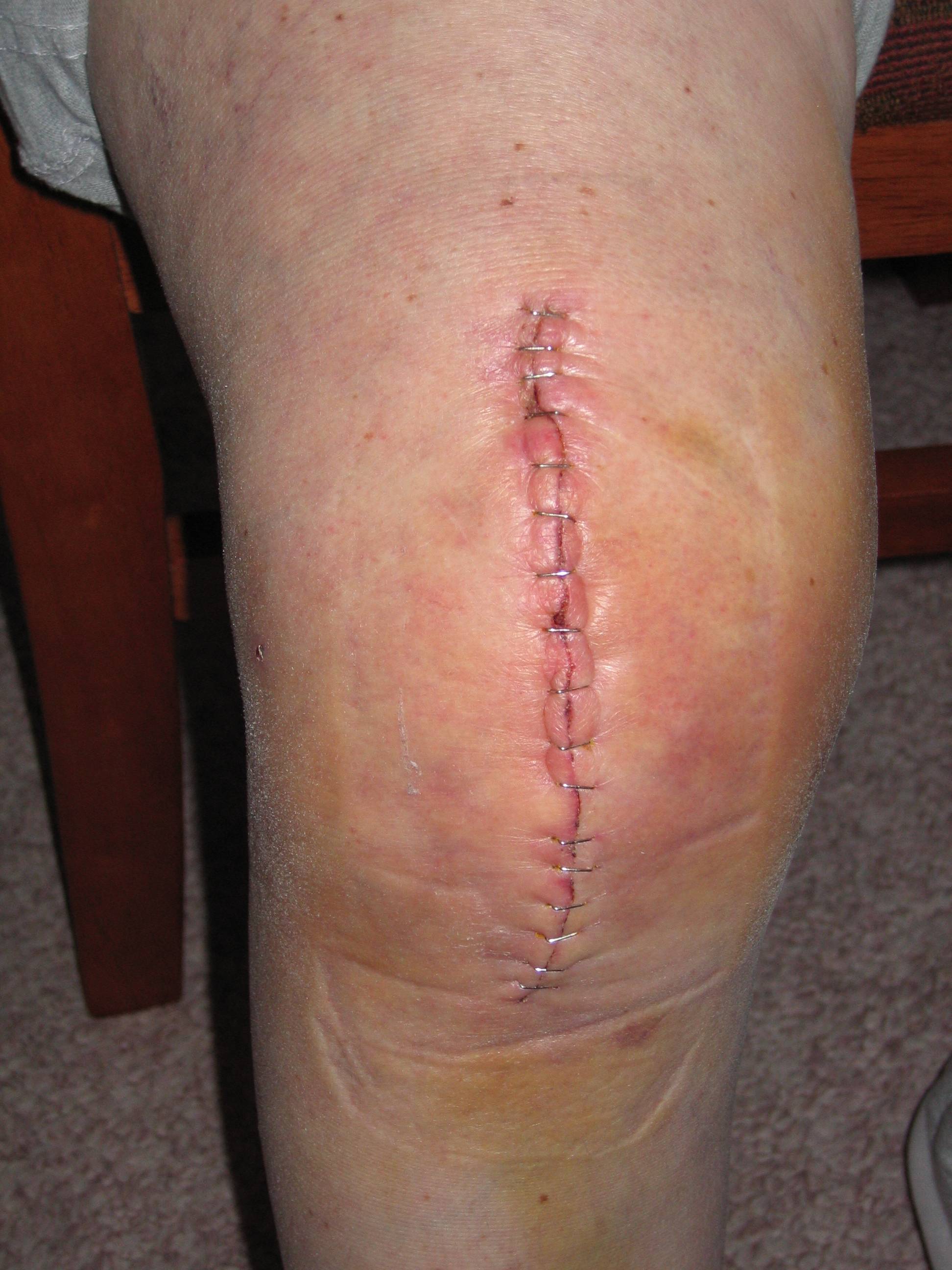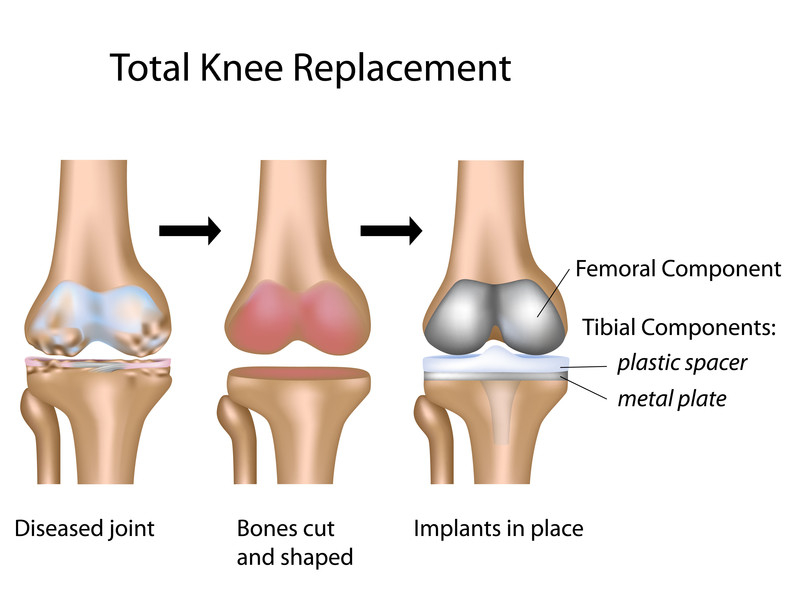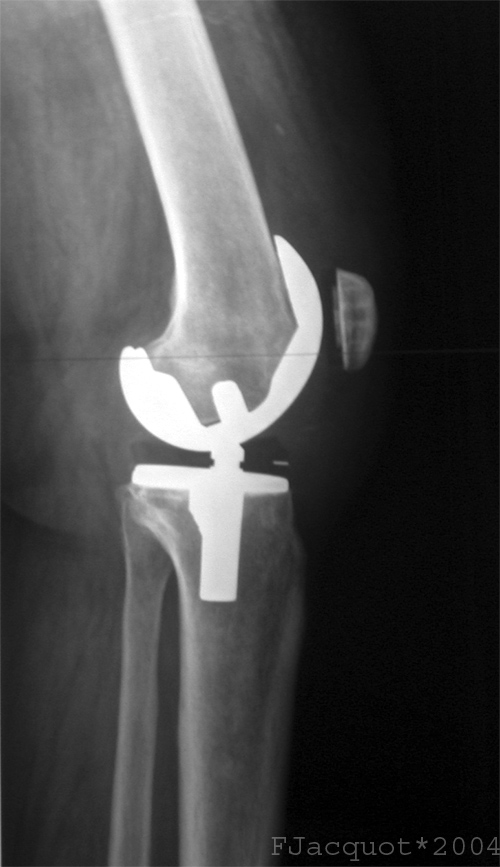When you’re a the big game, whether it’s football, basketball, soccer or otherwise, it’s likely you’re watching a group that includes someone who may require joint replacement surgery over the course of his life.
Can you believe that over half of a million total knee replacement (TKR) surgeries are performed a year?
As we age or experience knee injury, the progression of limitations on us imposed by arthritis and other diseases of the knee-joint can become too much to bear. Persistent pain and limited range of motion can make each step an exercise in physical and mental agony.
Risks for TKR include having osteoarthritis, infection, obesity, being younger than 55 years old and being male.
TKR involves removal of damaged bone and other tissue (e.g., cartilage) from the knee joint and creation and placement of a new joint (a prosthesis) made of plastic and/or metal. Most TKRs are successful, with approximately 90 percent of patients experiencing rapid and signficant pain reduction and improved joint function.
Of course, many of you have heard about complications of joint replacement surgeries, and TKR also comes with risks. Scarring, blood clots and infections may occur, but in the hands of a competent orthopedic surgeon, these risks pale in comparison to the benefits that the otherwise healthy individual will receive. Recovery involves a brief post-surgery hospitalization, followed by treatment in a rehabilitation facility and a couple of months of physical therapy (PT).
PT is especially important, because with it you’re setting your future bar. You need to work to whatever limits you want to reach, and you need to get started right away. Once the knee stiffens post-surgery, you won’t be able to get back what you’ve lost. Your post-surgery life and use of your knee will be a direct result of how hard and how much you work that knee during rehabilitation.
Recovery involves mental and physical considerations. Physically, you’re likely not going to be engaged in high-impact sports anymore (or even running for that matter, although this is a case-by-case consideration) because of the risks of loosening the prosthesis and requiring revision surgery. Riding a bike and other activities involving flexibility will be possible.
Mentally, TKR is not a fountain of youth, and you have to wrap your brain around that fact. You must define quality of life through the loss of pain and improved mobility.
Prosthesis are expected to last at least 15-20 years, and that level of longevity should give you a new lease on life. If you find yourself or your loved ones in severe pain from arthritis or other knee pain, ask your physician what circumstances may lead to the need for a TKR. You can certainly discuss the matter further with your SMA expert consultant.
Feel free to ask your SMA expert consultant any questions you may have on this topic.
Order your copy of Dr. Sterling’s new book Behind The Curtain: A Peek at Life from within the ER at jeffreysterlingbooks.com, iTunes, Amazon, Barnes and Nobles and wherever books are sold.
Thanks for liking and following Straight, No Chaser! This public service provides a sample of what http://www.SterlingMedicalAdvice.com (SMA) and 844-SMA-TALK offers. Please share our page with your friends on WordPress, like us on Facebook @ SterlingMedicalAdvice.com and follow us on Twitter at @asksterlingmd.
Copyright © 2016 · Sterling Initiatives, LLC · Powered by WordPress




